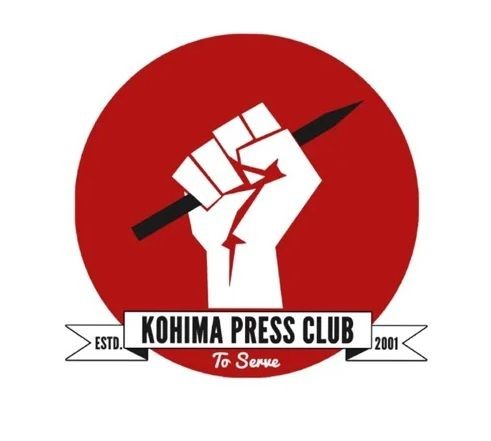
From humble beginnings to a permanent home, the KPC continues to inspire Nagaland’s media fraternity while championing press freedom and journalist welfare
Oken Jeet Sandham
From the era of typewriters and telegrams to mobile phones and digital media, the Kohima Press Club (KPC) has been at the heart of Nagaland’s journalistic evolution. Formed in 2001, it has witnessed the transformation of communication technology, political upheavals, and the resilience of the media fraternity. As it prepares to celebrate its Silver Jubilee on 20 January 2026, the KPC’s journey stands as a tribute to unity, perseverance, and an unflinching commitment to press freedom.
It feels like yesterday when journalists in Kohima came together to form the KPC. Some were from national dailies and magazines, others from regional or local newspapers, and a few were editors. All united to strengthen Nagaland’s journalist fraternity.
At the time, the Internet was new to the State, and email was barely used. Journalists relied on typewriters, sending reports by telegram and later fax. Portable typewriters were carried to the telegraph office opposite the Post Office, Kohima, where stories were typed and faxed to newspapers.
Mobile telephony arrived around 2003–2004. During his visit on 27 October 2003, Prime Minister Atal Bihari Vajpayee launched BSNL’s CellOne service in Kohima. Flanked by Chief Minister Neiphiu Rio and Governor Shyamal Datta, he made the inaugural call to Union Communications Minister Arun Shourie in New Delhi. Vajpayee humbly admitted his unfamiliarity with mobile technology but emphasized its power to connect people and remove distances. Shourie quipped, “That makes two of us,” praising Nagaland’s youth as pillars of strength for the Northeast. The launch made Kohima the third state capital in the region with mobile connectivity, and Rio expressed joy at this long-awaited development.
During the 2003 Assembly electioneering, Rio used a Wireless in Local Loop (WLL) phone, also known as the BSNL “Tarang,” allowing him to coordinate with political colleagues and workers within a restricted radius, demonstrating early adoption of limited mobility communication technology.
For nearly eight years, the KPC operated without a proper office, holding meetings at the North East Herald office. In 2008, towards the end of Rio’s first tenure, the Club was allotted half of the erstwhile DIPR office building, while the DIPR moved to the New Capital Complex.
The KPC has witnessed Nagaland’s political upheavals firsthand. Rio, once the right-hand man of Chief Minister S.C. Jamir, revolted in late 2002, joined the Nagaland People’s Council (later NPF), and led the NPF-led DAN coalition government after the 2003 elections. Soon after becoming Chief Minister, he donated a mini bus to the KPC for event coverage. Members, while grateful, reminded him of the Club’s lack of an office, a matter eventually resolved with DIPR’s support.
Throughout its journey, the KPC has remained firm in its core mission: the welfare of journalists and promotion of professional awareness. Beyond organizing National Press Day celebrations, media seminars, and advocacy programmes on HIV/AIDS with the Network of Naga People Living with HIV/AIDS (NNP+), the Club has actively engaged with the government for journalists’ welfare. It has pressed for pension schemes, increase the amount of operational subsidies for the accredited journalists, and other benefits extended to all working journalists to support their professional work and livelihoods. During T.R. Zeliang’s tenure, the Club submitted a General Memorandum to maintain a healthy rapport between the Press and the State Government.
The KPC also runs a Media Fellowship in collaboration with the Nagaland Building & Other Construction Workers Welfare Board (NBOCWWB), supporting journalists to produce in-depth stories on the construction industry in Nagaland, highlighting its challenges and experiences.
Other annual activities included, among others, visits to the State Mental Health Institute, Old Age Home, TB Hospital, and Naga Hospital as part of Independence and Republic Day celebrations, participation in the Challenger Cup, the KPC Annual Sports Event, Annual Picnic, and observance of National Press Day at the KPC office in collaboration with DIPR. The Club also took part in media sports events in Dimapur and Guwahati, and early members toured Delhi to meet dignitaries including President K.R. Narayanan and Union Minister Sushma Swaraj.
Tragedy struck in 2017 when violent protests burned down the Old Secretariat Building, reducing the KPC office to ashes. The protests were against the government’s decision to hold ULB elections with 33% women’s reservation. Thanks to the generosity of the Naga Students’ Federation (NSF), the KPC was provided a room to continue its basic functions. Earlier, annual events such as Foundation Day and Annual Sports Meets had been held at venues like Congress Bhavan and NSF Conference Hall.
Misfortune struck again in May 2023, when the NSF office in the historic Naga Club building was demolished. In June 2023, the KPC shifted its office to the Angami Public Organisation (APO) Building, resuming its operations.
Since losing its office in 2017, successive Club leaders worked tirelessly to secure a permanent home. Under President Alice Yhoshü, the KPC finally secured government-assisted allocation of a plot of land in the New Capital Complex area, Kohima. As the Club prepares to celebrate its Silver Jubilee, the Building Committee is making all-out efforts to complete the new office despite limited funds, ensuring the celebrations can take place from this venue. President Yhoshü acknowledged the State Government under Chief Minister Rio for addressing the urgent needs of the growing press fraternity, the Directorate of Information & Public Relations and NPWD (Housing) for facilitating necessary paperwork, and Zynorique Initiatives, LB Enterprise, and the KPC Building Committee for supporting the construction plans. She deserves special credit for turning this long-cherished dream into reality.
As the KPC celebrates 25 years, it also fondly remembers past leaders and members who are no longer with us. Their vision and contributions remain an enduring inspiration for Nagaland’s media fraternity, guiding the Club as it steps confidently into the next quarter-century of journalistic service.



